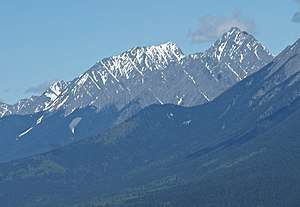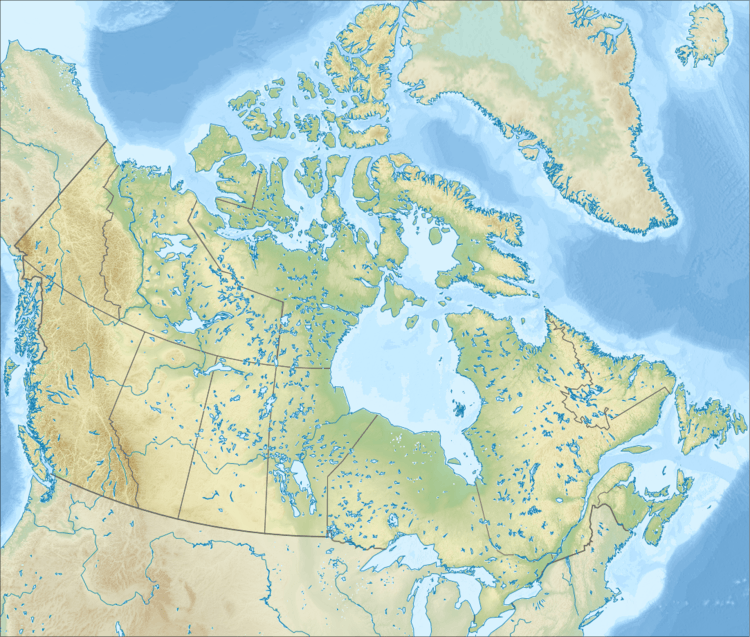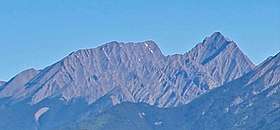Mount Selkirk
Mount Selkirk is a 2,930-metre (9,610-foot) mountain summit located in the Vermilion River Valley along the eastern border of Kootenay National Park. Park visitors can see the peak from Highway 93, also known as the Banff–Windermere Highway. It is part of the Mitchell Range, which is a sub-range of the Canadian Rockies of British Columbia, Canada. Its nearest higher peak is Catlin Peak, 1.6 km (0.99 mi) to the northwest.
| Mount Selkirk | |
|---|---|
 Mount Selkirk seen from Kootenay Valley Overlook along Highway 93 | |
| Highest point | |
| Elevation | 2,930 m (9,610 ft) [1] |
| Prominence | 320 m (1,050 ft) [1] |
| Parent peak | Catlin Peak (2941 m)[1] |
| Coordinates | 50°51′59″N 115°54′30″W [2] |
| Geography | |
 Mount Selkirk Location of Mount Selkirk in British Columbia  Mount Selkirk Mount Selkirk (Canada) | |
| Location | Kootenay National Park British Columbia, Canada |
| Parent range | Mitchell Range Canadian Rockies |
| Topo map | NTS 82J13 |
| Geology | |
| Age of rock | Cambrian[3] |
| Type of rock | Limestone[3] |

History
The mountain was named in 1886 by George Mercer Dawson in honor of Thomas Douglas, 5th Earl of Selkirk (1771-1820), a Scottish philanthropist who sponsored immigrant settlements at the Red River Colony in what is now Manitoba.[4] The mountain's name was officially adopted in 1924 by the Geographical Names Board of Canada.[2]
Geology
Mount Selkirk is composed principally of Ottertail limestone, sedimentary rock laid down during the Precambrian to Cambrian periods and pushed east and over the top of younger rock during the Laramide orogeny.[5]
Climate
Based on the Köppen climate classification, Mount Selkirk is located in a subarctic climate with cold, snowy winters, and mild summers.[6] Temperatures can drop below −20 °C with wind chill factors below −30 °C. Precipitation runoff from the mountain drains into tributaries of the Vermilion River.
References
- "Mount Selkirk". Bivouac.com. Retrieved 2019-03-18.
- "Mount Selkirk". Geographical Names Data Base. Natural Resources Canada. Retrieved 2019-03-18.
- Parks Canada
- Mount Selkirk PeakFinder
- Gadd, Ben (2008). "Geology of the Rocky Mountains and Columbias". Cite journal requires
|journal=(help) - Peel, M. C.; Finlayson, B. L. & McMahon, T. A. (2007). "Updated world map of the Köppen−Geiger climate classification". Hydrol. Earth Syst. Sci. 11: 1633–1644. ISSN 1027-5606.
External links
- Mount Selkirk weather forecast
- Parks Canada web site: Kootenay National Park